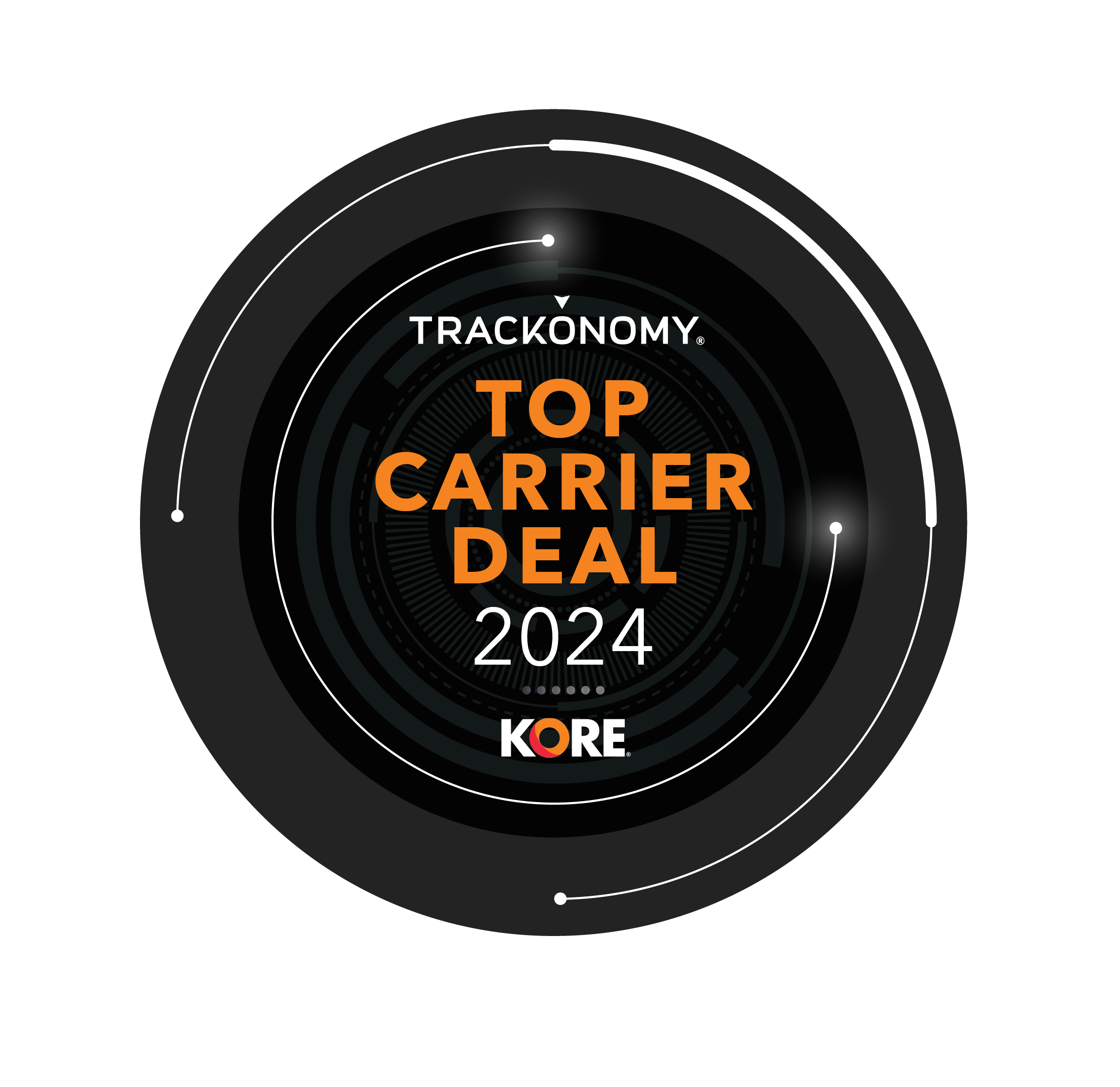
Trackonomy Receives KORE Channels Partner Award for Top Carrier Deal
Trackonomy honored with the Top Carrier Deal Award in the inaugural KORE Channels Partner Awards.
In today’s interconnected global economy, supply chains are more complex than ever. While this complexity enables efficiency and scalability, it also increases exposure to risks that can disrupt operations and impact profitability. Supply chain risk management (SCRM) is the strategic process of identifying, assessing, and mitigating these risks to ensure business continuity and resilience.
From raw material sourcing to last-mile delivery, even a minor disruption at one node can ripple across the entire chain, resulting in delayed shipments, increased costs, or customer dissatisfaction. External shocks like geopolitical conflict or extreme weather, as well as internal vulnerabilities like process inefficiencies or over-reliance on a single supplier, can magnify these effects.
With geopolitical shifts, climate-related disasters, and technological disruptions becoming more frequent, proactive risk management is essential for sustaining competitive advantage. In this guide, we explore the key elements of supply chain risk management and actionable strategies for minimizing vulnerabilities.

Supply chain risks refer to potential disruptions that can occur at any stage in the supply chain, affecting the flow of goods, services, and information. These threats originate from various internal and external sources, including economic conditions, regulatory changes, and environmental risk factors. They can impact any part of supply chain operations—from raw material procurement to final delivery—and may arise from unexpected events like supplier insolvency, port congestion, natural disasters, labor strikes, cyberattacks, or shifting customer demand.
Effectively managing these risks requires organizations to understand both the frequency and severity of potential disruptions and to build systems that allow for rapid response, recovery, and long-term resilience.
Equipment failures, supplier delays, and production halts can cause sudden disruptions, impacting production timelines and downstream fulfillment.
A notable example occurred in 2021 when a fire at a Renesas Electronics semiconductor factory in Japan disrupted the global supply chain for the automotive industry. Responsible for nearly 30% of the world’s microcontroller units used in cars, the plant’s shutdown caused months-long delays and production slowdowns for major automakers [1][2].
Geopolitical shifts, trade disputes, and supply chain realignments can introduce uncertainty and cost pressures across sourcing and distribution operations.
For instance, the U.S.–China trade tensions that began in 2018 led to widespread tariff increases. A 25% tariff on steel imports from China compelled many American manufacturers to either absorb rising costs or rapidly find alternative suppliers, both of which strained margins and operations [3].
Volatility in exchange rates, supplier bankruptcy, and macroeconomic conditions can expose organizations to serious financial setbacks.
A real-world example is the 2019 collapse of British travel company Thomas Cook. The company’s bankruptcy disrupted tourism supply chains and left stakeholders, including hotels, airlines, and local businesses, grappling with unpaid debts. Thomas Cook’s total liabilities exceeded $12 billion, affecting banks, suppliers, and customers alike [4][5].
Changes in regulations or ethical missteps can trigger legal challenges, reputational damage, security risks, and operational constraints.
In 2015, Volkswagen faced a major compliance scandal after installing software to cheat emissions tests. The fallout included more than 9 million vehicle recalls, over $30 billion in penalties, and a ripple effect of tighter emissions regulations across the auto industry, fundamentally reshaping supplier and product strategies [6].
Natural disasters and climate-related disruptions can halt production, damage infrastructure, and create long-term uncertainty in supply continuity.
A prime example is the 2011 flooding in Thailand, which submerged critical factories and halted 25% of the world’s hard drive production. The result: global shortages and price surges that impacted manufacturers and consumers for months [7].
Risk identification is the foundation of any supply chain risk management strategy. It involves proactively spotting potential threats and known risks that could disrupt operations before they become actual problems. This process helps organizations build awareness of both internal and external vulnerabilities across their entire supply chain network. The key components of risk identification are:
Increasingly, companies are also turning to digital platforms that leverage machine learning and real-time data to detect early warning signals. These tools can identify unexpected changes in supplier behavior, flag weather or geopolitical alerts, and even analyze financial news or social sentiment to anticipate a potential risk, empowering teams to act before disruptions occur.
Together, these tools and methods give companies a clear picture of what could go wrong and where to focus their risk mitigation efforts.
Once risks are identified, the next step is to assess how serious they are. Risk assessment helps organizations evaluate which risks deserve immediate action and which ones can be monitored or managed with simple safeguards. It’s all about balancing likelihood and impact using quantitative and qualitative approaches as follows:
Frameworks like the Risk Matrix categorize risks based on their severity, while Failure Mode and Effects Analysis (FMEA) systematically identifies potential failure points and their impact. Once assessed, risks should be prioritized—high-severity, high-probability risks demand immediate action, while moderate risks require contingency plans, and low-severity risks should still be monitored consistently
Not all risks are created equal. High-severity, high-probability risks—like a major supplier shutting down—demand fast, comprehensive action. Moderate risks may only require backup plans or monitoring. Low-impact risks shouldn’t be ignored but can often be addressed with minimal resources.
By performing an accurate risk assessment, organizations can allocate their resources wisely, avoid costly surprises, and strengthen their overall resilience.
A well-structured risk response plan involves proactively addressing identified risks and establishing clear escalation protocols to ensure swift action. To minimize potential supply chain disruption, organizations should focus on:

Maintaining a resilient supply chain requires continuous risk monitoring to detect potential threats before they escalate. Leveraging real-time data, predictive analytics, and automated alerts can help organizations stay ahead of disruptions and take proactive measures. Monitoring key operational aspects such as supplier performance, inventory levels, and transportation reliability ensures early detection of anomalies that could indicate risks.
To operationalize this, many companies are integrating risk dashboards and automated alert systems directly into their supply chain control towers. These tools provide real-time visibility into disruptions and allow teams to quickly coordinate responses. Some organizations also schedule recurring risk review meetings to align cross-functional teams on mitigation progress and emerging concerns.
Beyond ongoing monitoring, regular reviews and updates of risk management plans are crucial. Conducting scenario-based stress testing and revisiting mitigation strategies helps businesses adapt to evolving threats and ensure their risk response remains effective over time.
To measure the effectiveness of risk management efforts, organizations should define and track key performance indicators (KPIs) that provide insights into overall supply chain integrity and stability. Essential metrics include:
By continuously monitoring risks, reviewing strategies, and tracking KPIs, businesses can strengthen their supply chain resilience and enhance long-term stability.
Supply chain risk management is no longer optional—it’s a business imperative in today’s volatile world. Organizations that proactively identify, assess, and mitigate risks can safeguard operations, reduce financial losses, and maintain their competitive edge.
The benefits of a mature risk management program extend beyond preventing disruptions. It supports long-term operational excellence, improves stakeholder trust, and creates a culture of preparedness that enables businesses to adapt more quickly to future challenges. With greater visibility and control, organizations can make smarter decisions, recover faster from setbacks, and position themselves for sustainable growth.
By implementing a structured risk management strategy, businesses can enhance supply chain resilience, improve decision-making, and minimize disruptions.
Are you ready to strengthen your supply chain risk management strategy? Contact our experts at Trackonomy today to explore cutting-edge solutions designed to mitigate risks and optimize supply chain performance.